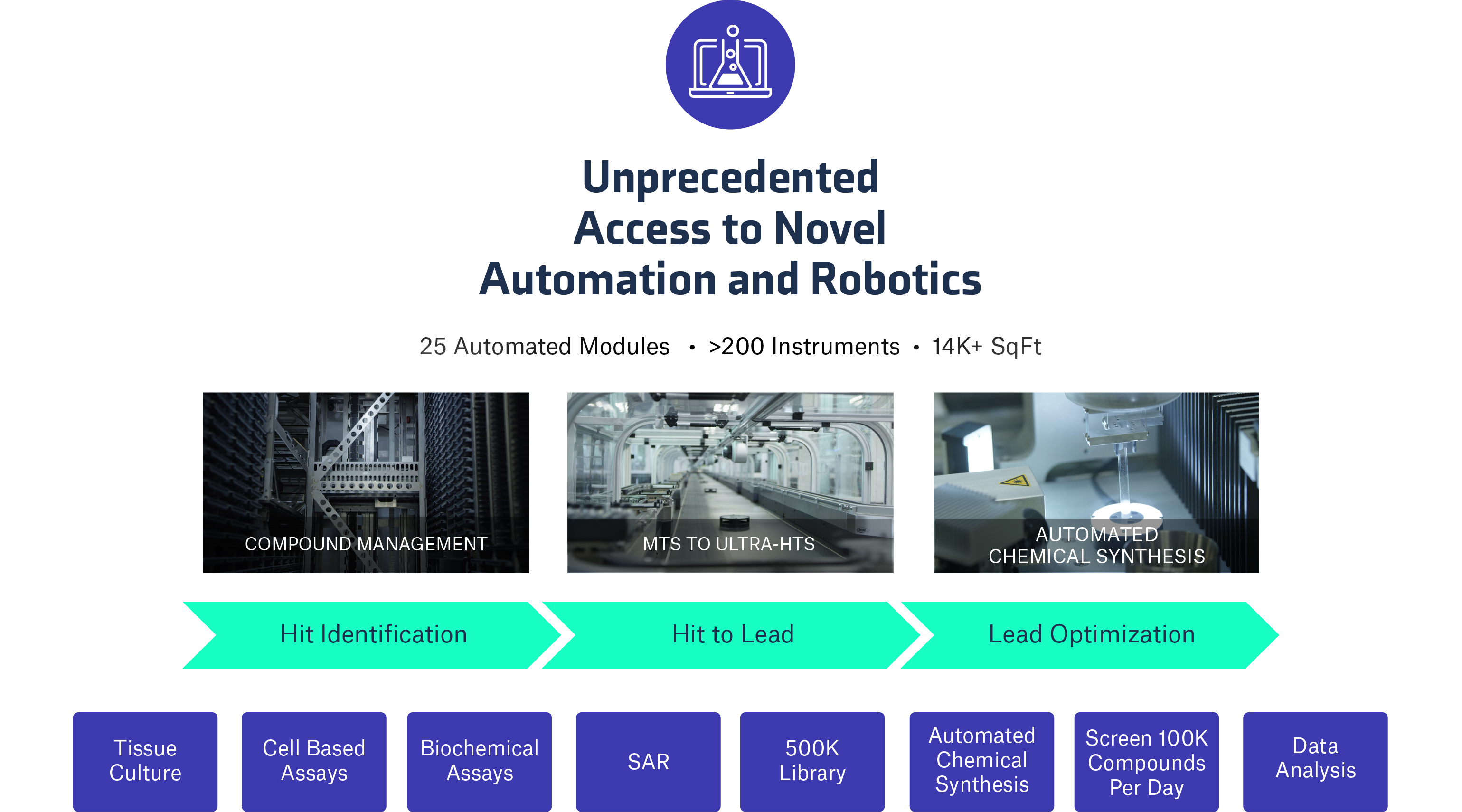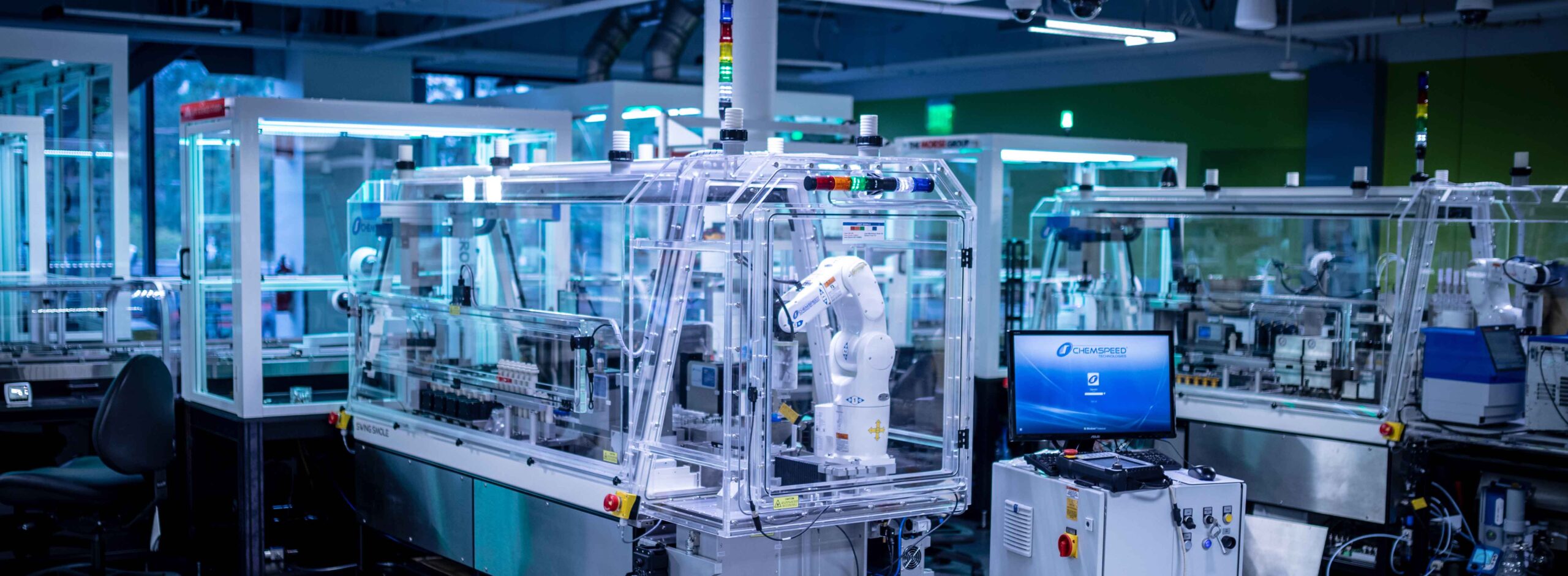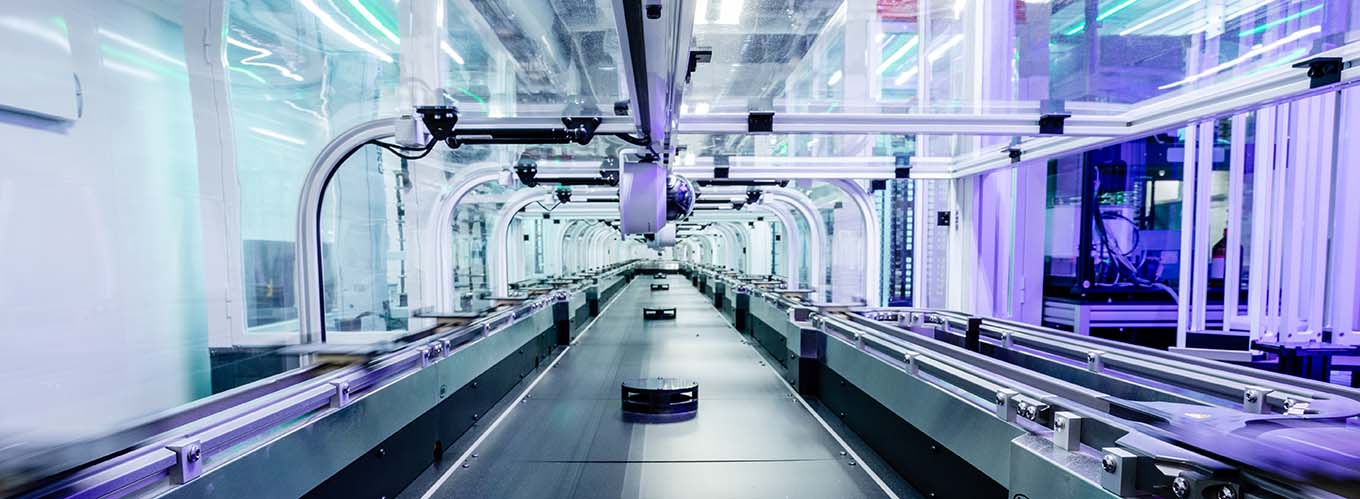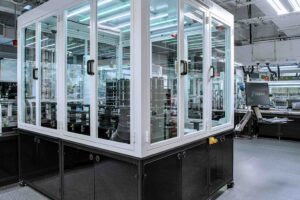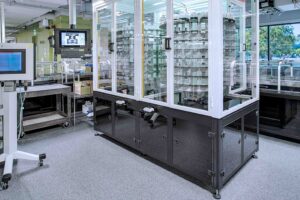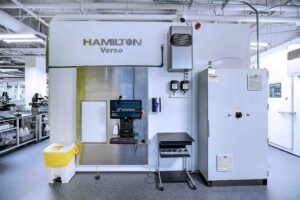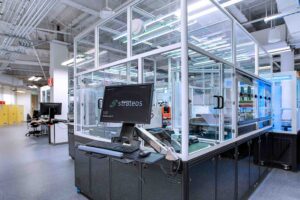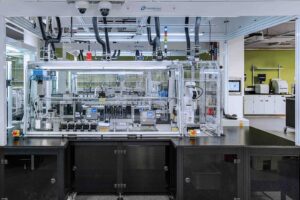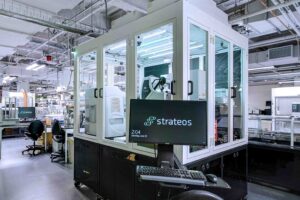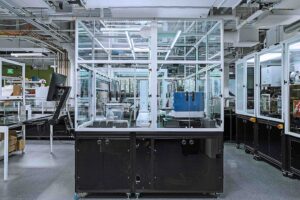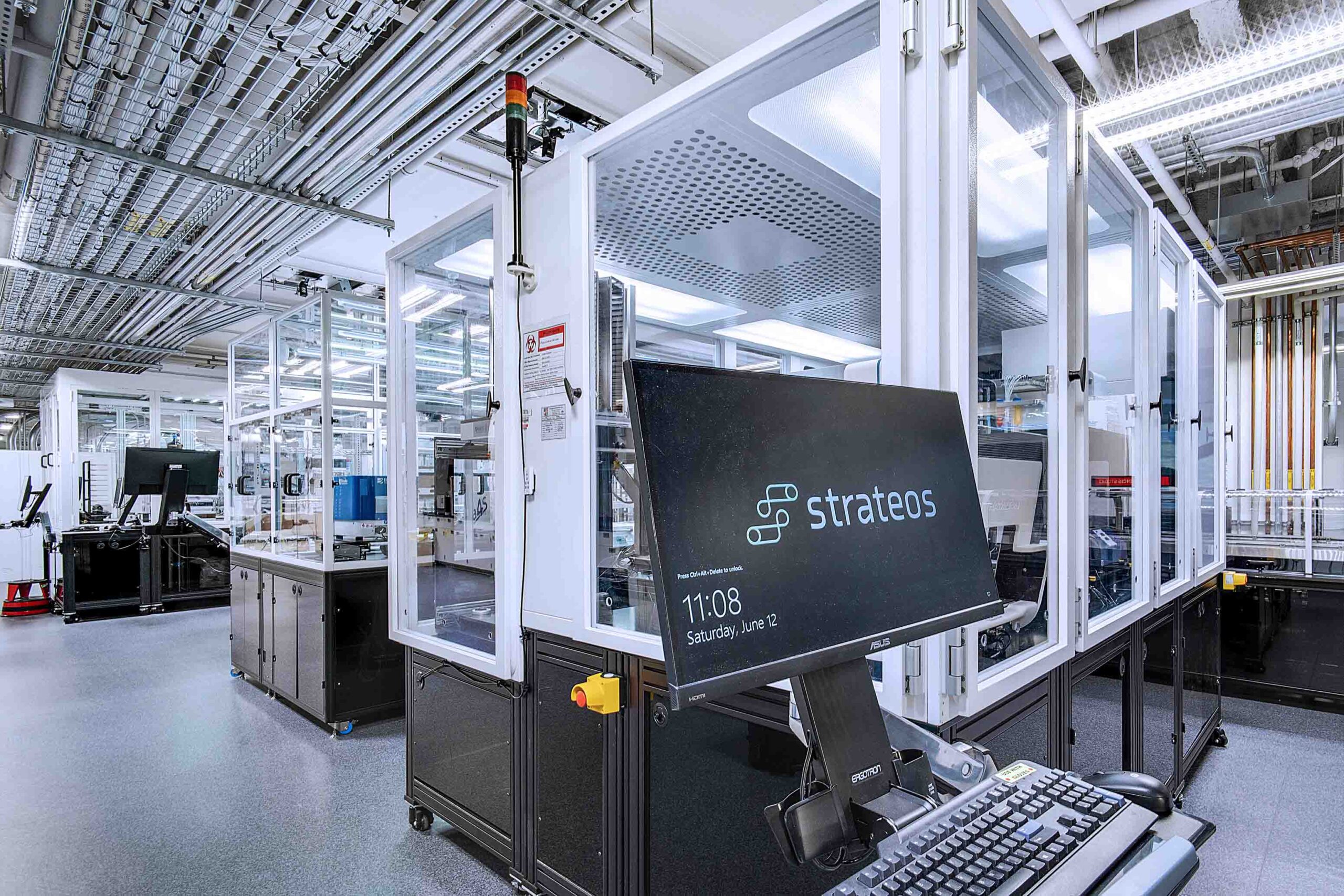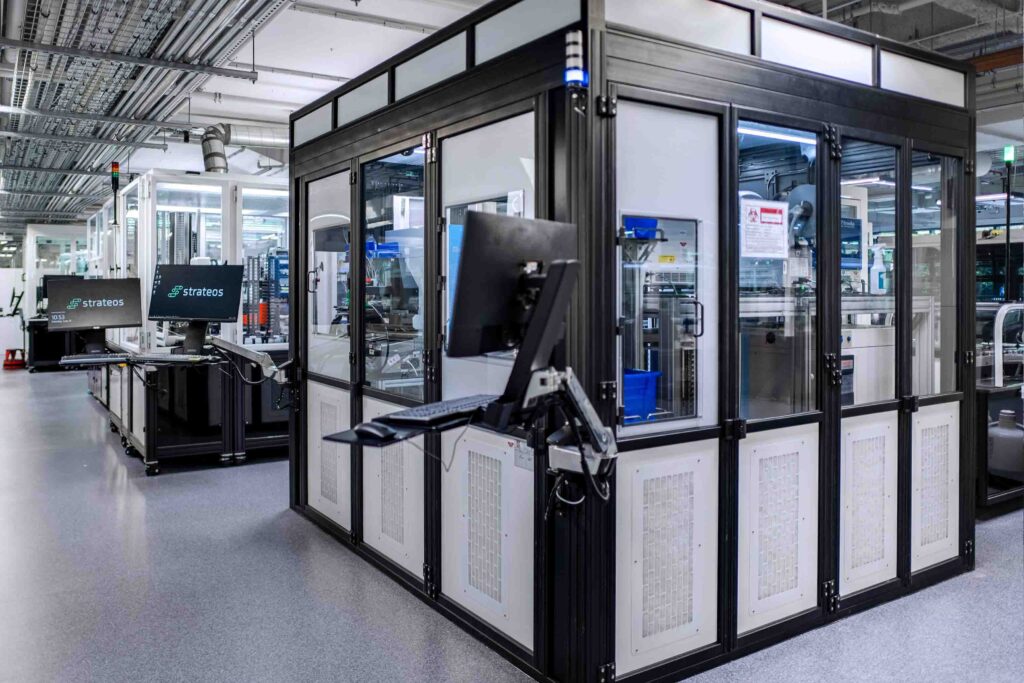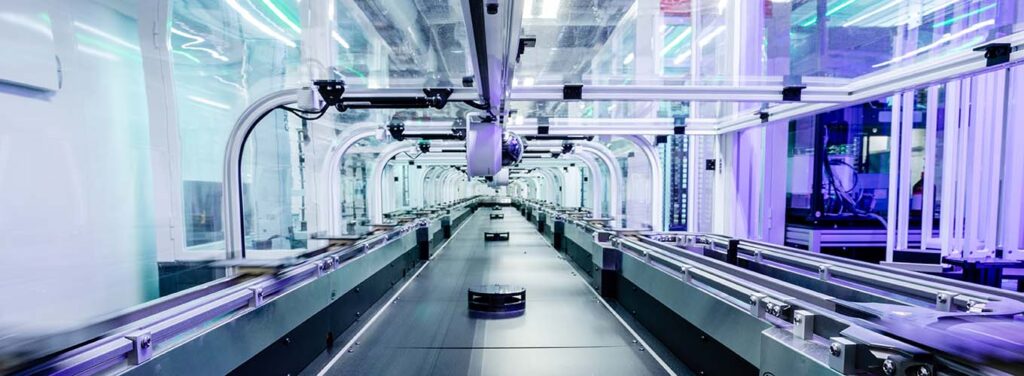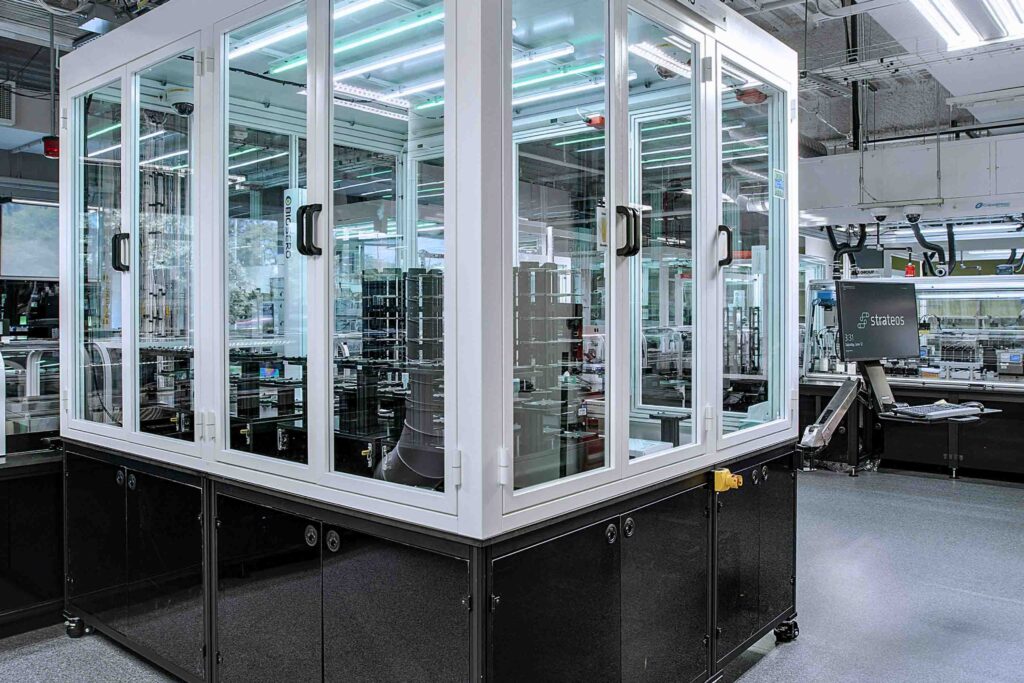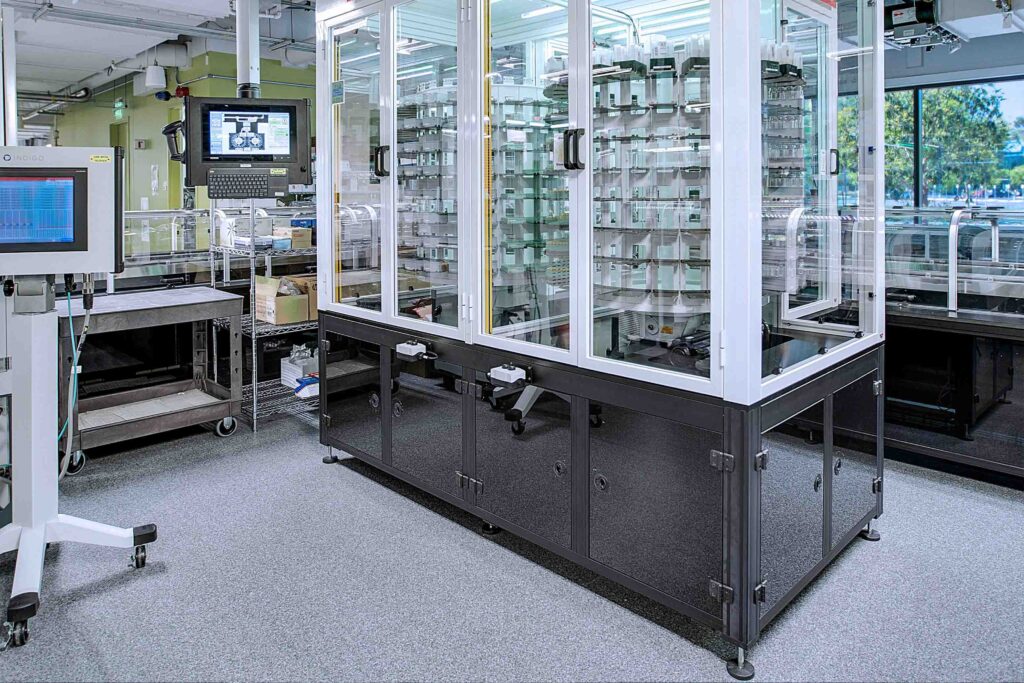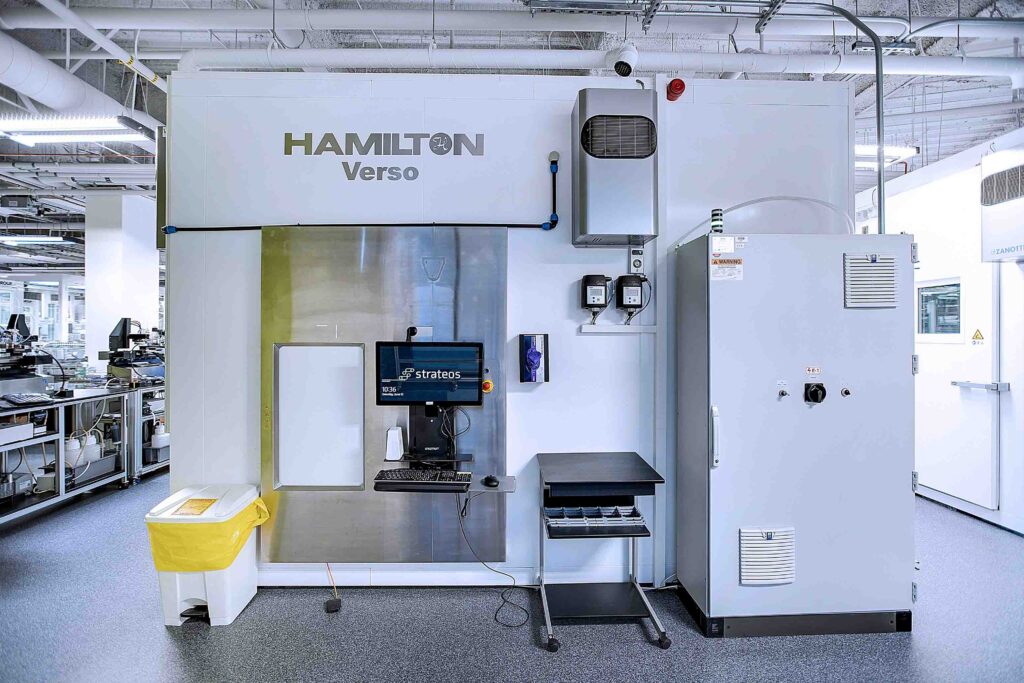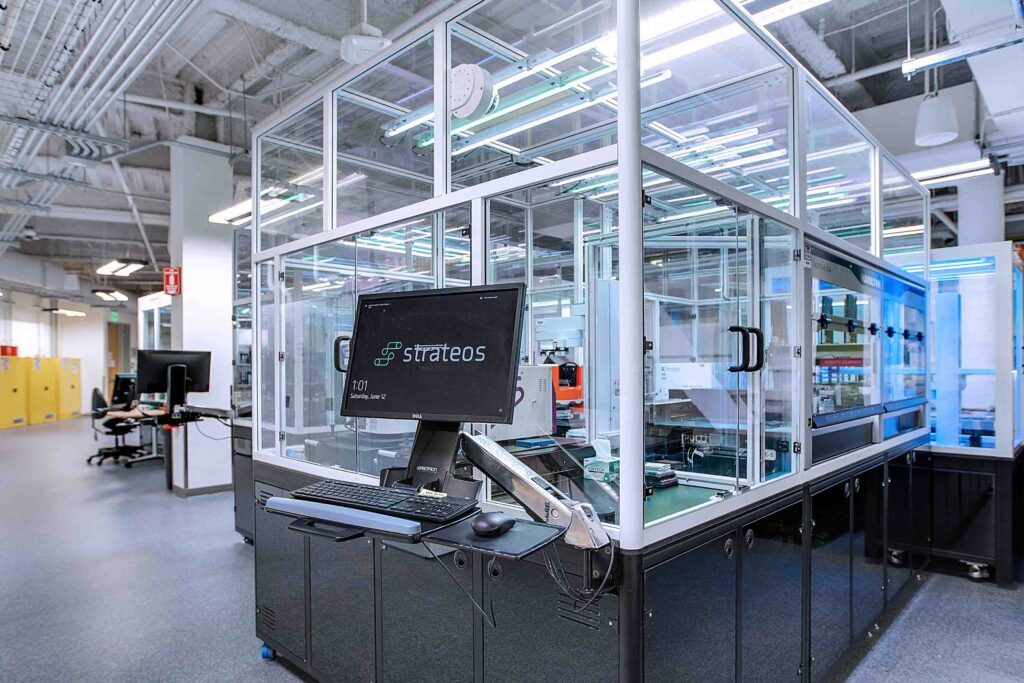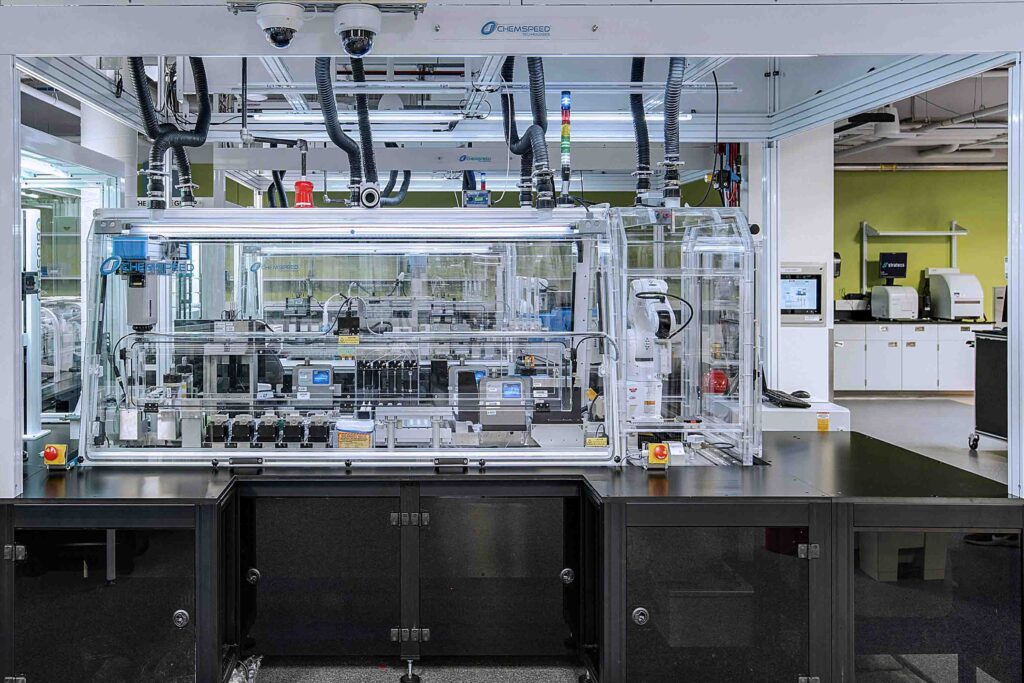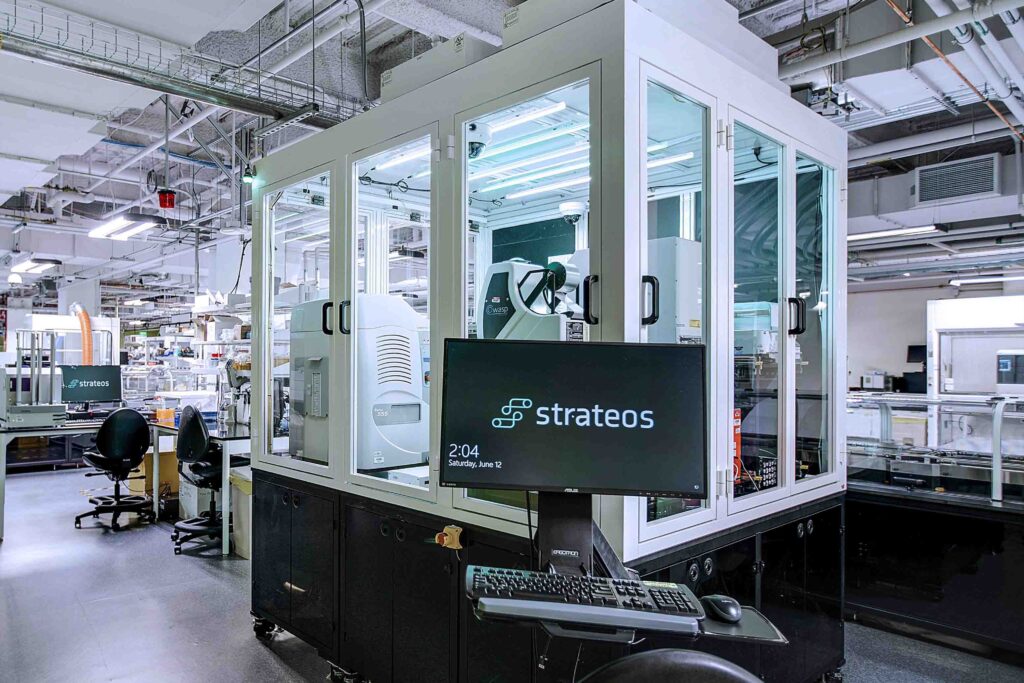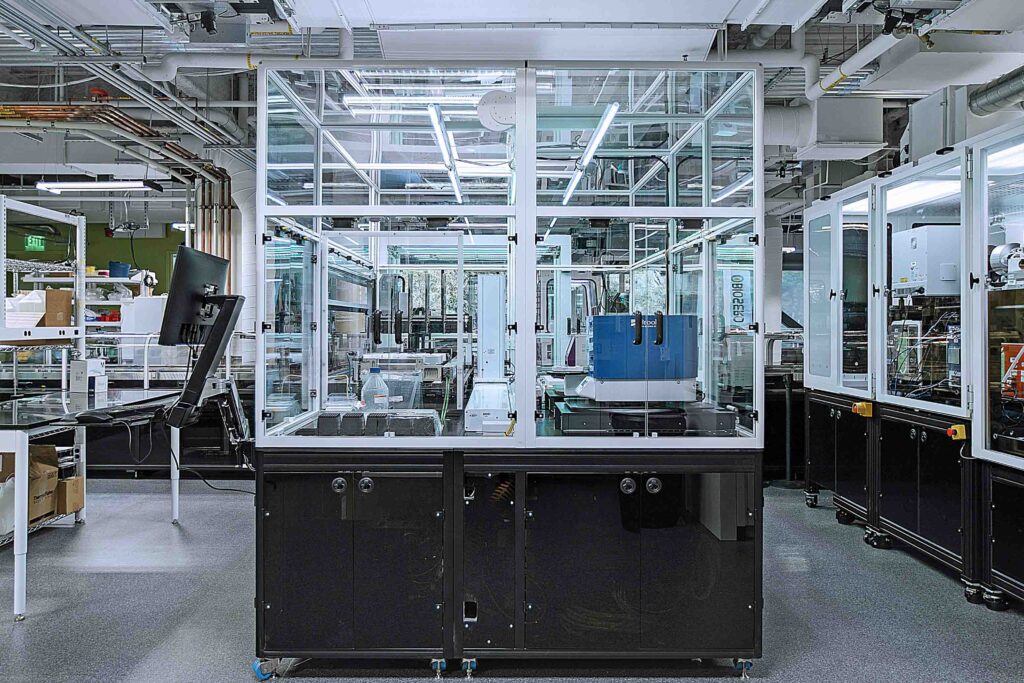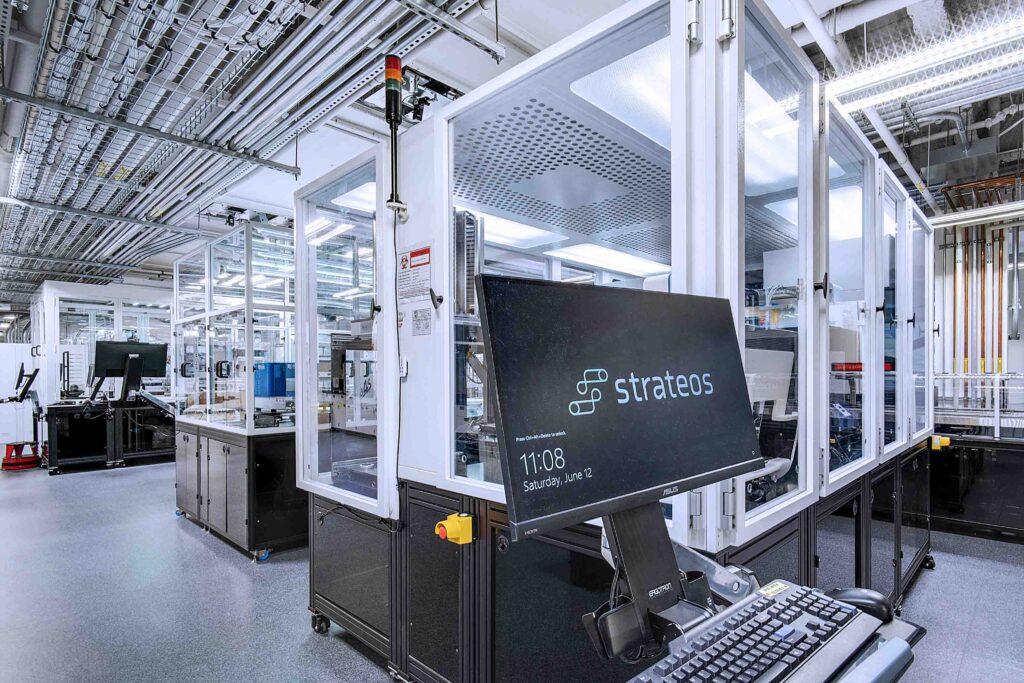Small Molecule Drug Discovery
Automation and Miniaturization Leads
to Robust Screening Campaigns
SMALL MOLECULE DRUG DISCOVERY SERVICES
Learn More About the Automated Small Molecule Drug Discovery Modules
The smart lab physically and virtually integrates several areas of the drug discovery process together creating a state-of-the-art, automated drug discovery platform. The custom engineered Magnemotion track based layout, and scheduling and execution software integrates the automation modules, contextualizing data in an end-to-end laboratory workflow. By melding automation and drug discovery, the Strateos Cloud Lab can be the engine for a winning go-to-market strategy for your next drug launch.
Click on the Images Below to Learn More
About Our Automation Modules
Interested in a Demo?
Get in touch today to get access to the Strateos Platform for your team.


